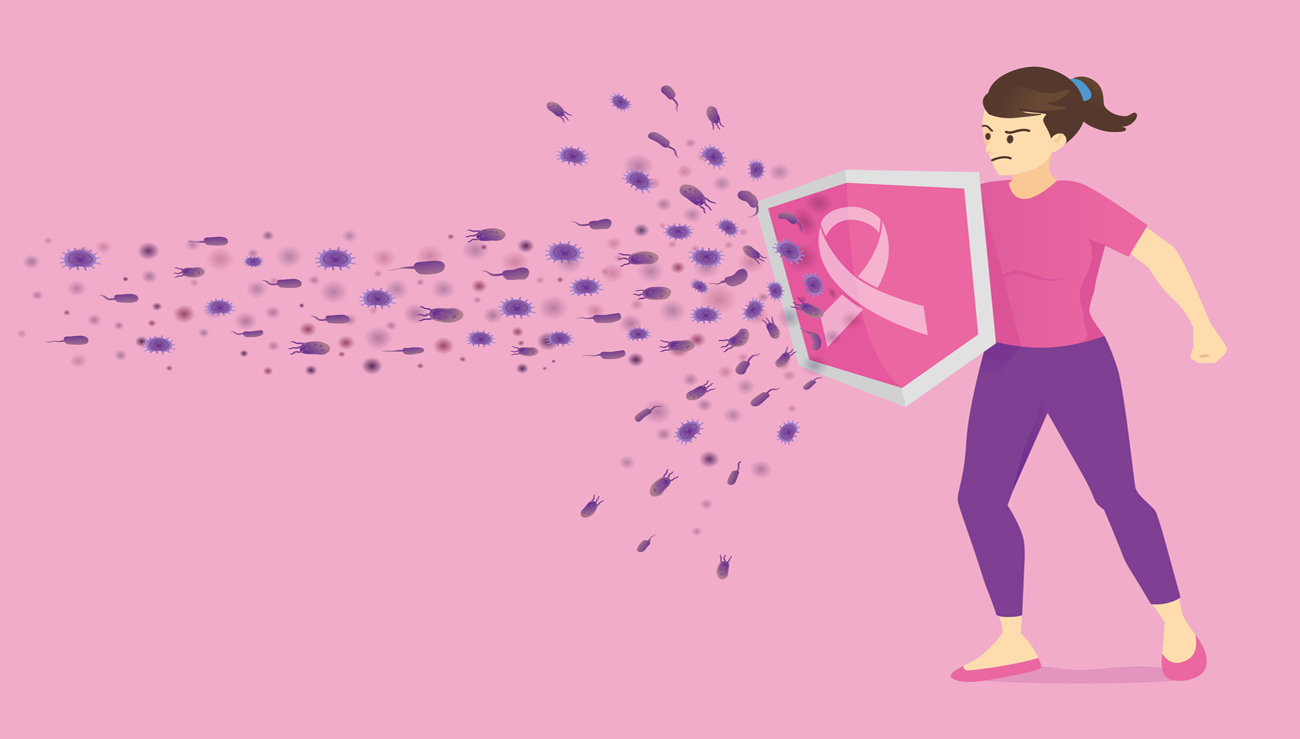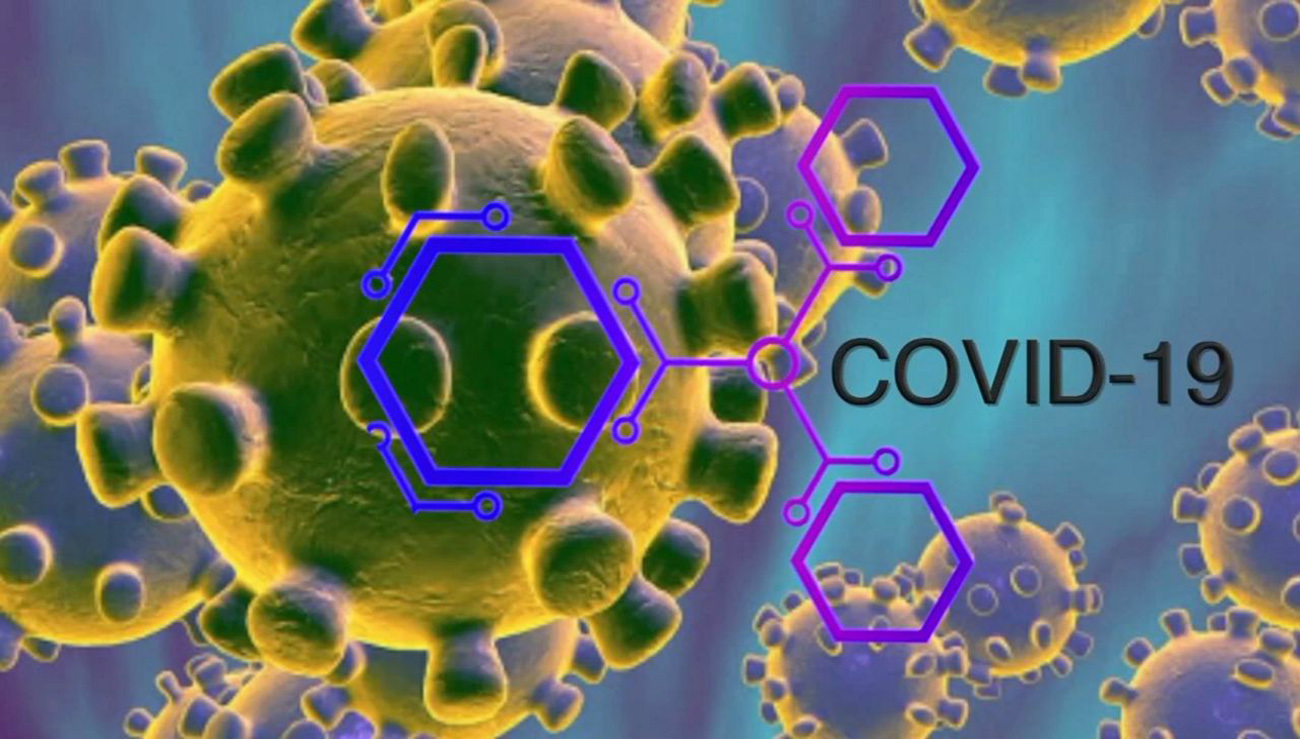
Insights of Breast Cancer & Barriers to its Therapy
Breast cancer is the most common cancer across the globe occurring commonly in women population, and it is one of the main causes of mortality in women. In 2018, 1,62,468 new cases and 87,090 death cases of breast cancer were registered in India. In these recent years, lots of studies were conducted in breast cancer related to treatment and management, but in spite of getting so much advancement in the treatment of breast cancer still, the mortality rate of women is increasing day by day. Numerous factors are acting as barriers or challenges in breast cancer preventive therapy. It includes lack of knowledge regarding the treatment of cancer and patient getting insecure about treatment, fear of having side effects, cost of treatment and the efficacy of the drugs being prescribed. The study intended to determine the perceived insights and barriers to treatment of breast cancer.
Author(s):
Nidhi Garg, Suman Baishnab, Rosy Das, Kiranjeet Kaur, Saurabh Gupta and Sandeep Arora, Department of Pharmacy Practice & Pharmacology, Chitkara College of Pharmacy, Chitkara University, Chandigarh Patiala National Highway (NH64), Punjab–140401, India
Keywords:
Breast Cancer, Carcinoma, Tumour, Barriers
URL:
https://jptrm.chitkara.edu.in/index.php/jptrm/article/view/125
References:
Adhikary, A., Chakraborty, D., Indu, R., Bhattacharya, S., Ray, M., Mukherjee, R. (2018). Drug prescription pattern of breast cancer patients in a tertiary care hospital in West Bengal: A Cross-Sectional and Questionnaire-Based Study. Asian journal of pharmaceutical and clinical research, 11(3), 398-401. https://doi.org/10.22159/ajpcr.2018.v11i3.23180
Adhikary, et al. (2018). Drug prescription pattern of breast cancer patients in a tertiary care hospital in West Bengal: A Cross-Sectional and Questionnaire-Based Study. Asian journal of pharmaceutical and clinical research, 11(3), 398-401. DOI: https://doi.org/10.22159/ajpcr.2018.v11i3.23180
Alco, G., Igdem, S. & Dincer, M. (2014). Vitamin D levels in patients with breast cancer: importance of dressing style. Asian Pac J Cancer Prev, 15, 1357-62. https://doi.org/10.7314/APJCP.2014.15.3.1357 DOI: https://doi.org/10.7314/APJCP.2014.15.3.1357
Anuradha, D. & Lakshmi A. (2017). Mucinous carcinoma of breast with neuroendocrine differentiation: a rare case report with review of literature. Int J Res Med Sci, 2, 1751-4. https://doi.org/10.5455/2320-6012.ijrms201411102 DOI: https://doi.org/10.5455/2320-6012.ijrms201411102
Arpino, G., Bardou, V. J., Clark, G. M. & Elledge, R. M. (2004). Infiltrating lobular carcinoma of the breast: tumor characteristics and clinical outcome. Breast Cancer Res, 6, 149-52. https://doi.org/10.1186/bcr767 DOI: https://doi.org/10.1186/bcr767
Bednarek, A., Sahin, A., Brenner, A., Johnston, D. & Aldaz, C. (1997). Analysis of telomerase activity levels in breast cancer: positive detection at the in situ breast carcinoma stage. Clin Cancer Res, 3(1), 11-6.
Bray, F., Ferlay, J., Soerjomataram, I., Dikshit, R., Eser, S., Mathers, C., Rebelo, M., Parkin, D. M., Forman, D. (2014). Cancer incidence and mortality worldwide: Sources, methods and major patterns in GLOBOCAN 2012. Int. J. Cancer, 136, E359-E386. https://doi.org/10.1002/ijc.29210 DOI: https://doi.org/10.1002/ijc.29210
Cariati, M., Bennett-Britton, T. M., Pinder, S. E., Purushotham, A. D. (2005). Inflammatory breast cancer. Surg Oncol, 14, 133-43. DOI: https://doi.org/10.1016/j.suronc.2005.07.004
Cavalieri, E., Chakravarti, D., Guttenplan, J., Hart, E., Ingle, J., Jankowiak, R., et al. (2006). Catechol oestrogen quinones as initiators of breast and other human cancers: implications for biomarkers of susceptibility and cancer prevention. Biochim Biophys Acta, 1766, 63-8. https://doi.org/10.1016/j.bbcan.2006.03.001 DOI: https://doi.org/10.1016/j.bbcan.2006.03.001
Chopra, D., Rehan, H. S., Sharma, V., Mishra, R. (2016). Chemotherapy-induced adverse drug reactions in oncology patients: A prospective observational survey. Indian J Med Paediatr Oncol, 37, 42-6. https://doi.org/10.4103/0971-5851.177015 DOI: https://doi.org/10.4103/0971-5851.177015
Clauser, P., Marino, M. A., Baltzer, P. A., Bazzocchi, M., Zuiani, C. (2016). Management of atypical lobular hyperplasia, a typical ductal hyperplasia, and lobular carcinoma in situ. Exp Rev Anticancer ther, 16, 335-6. DOI: https://doi.org/10.1586/14737140.2016.1143362
Corbelli, J., Borrero, S., Bonnema, R., et al. (2014). Use of the Gail model and breast cancer preventive therapy among three primary care specialties. J Women’s Health, 23, 746-52. https://doi.org/10.1089/jwh.2014.4742 DOI: https://doi.org/10.1089/jwh.2014.4742
Elmore, S. (2007). Apoptosis: A review of programmed cell death. Toxicol Pathol, 35, 495-516. https://doi.org/10.1080/01926230701320337 DOI: https://doi.org/10.1080/01926230701320337
Errichetti, E., Avellini, C., Pegolo, E., De Francesco, V. (2017). Dermoscopy as a supportive instrument in the early recognition of erosive adenomatosis of the nipple and mammary paget’s disease. Ann Dermatol, 29, 365-7. https://doi.org/10.5021/ad.2017.29.3.365 DOI: https://doi.org/10.5021/ad.2017.29.3.365
Evan, G. and Vousden, K. (2001). Proliferation, cell cycle and apoptosis in cancer. Nature, 411, 342-8. https://doi.org/10.1038/35077213 DOI: https://doi.org/10.1038/35077213
Feuer, E. J., Wun, L. M., Boring, C. C., Flanders, W. D., Timmel, M. J., Tong, T. (1993). The Lifetime Risk of Developing Breast Cancer. JNCI Journal of the National Cancer Institute, 85(11), 892-897. https://doi.org/10.1093/jnci/85.11.892 DOI: https://doi.org/10.1093/jnci/85.11.892
Franca, A., Ferreira, M., Franca, J., Franca, E., Honorio- Franca, A. (2012). Breastfeeding and its relationship with reduction of breast cancer: a review. Asian Pac J Cancer Prev, 13, 5327-32. https://doi.org/10.7314/APJCP.2012.13.11.5327 DOI: https://doi.org/10.7314/APJCP.2012.13.11.5327
Garrone, O., Miraglio, E. Vandone, A.M., Vanella, P., Lingua, D., Merlano, M. C. (2017). Eribulin in advanced breast cancer: safety, efficacy and new perspectives. Future Oncol, 13(30), 2759-2769. https://doi.org/10.2217/fon-2017-0283 DOI: https://doi.org/10.2217/fon-2017-0283
Gerratana, L., Bonotto, M., Bozza, C., Ongaro, E., Fanotto, V., Pelizzari, G., Puglisi, F. (2017). Pertuzumab and breast cancer: another piece in the anti-HER2 puzzle. https://doi.org/10.1080/14712598.2017.1282944 DOI: https://doi.org/10.1080/14712598.2017.1282944
Gupta, G. & Massagué, J. (2006). Cancer metastasis: building a framework. Cell, 127, 679-95. https://doi.org/10.1016/j.cell.2006.11.001 DOI: https://doi.org/10.1016/j.cell.2006.11.001
Gusterson, B., Warburton, M. J., Mitchell, D., Ellison, M., Neville, A.M. & Rudland, P.S. (1982). Distribution of myoepithelial cells and basement membrane proteins in the normal breast and in benign and malignant breast diseases. Cancer Res, 42, 4763-70.
Hanahan, D. and Weinberg, R. (2000). The hallmarks of cancer. Cell, 100, 57-70. https://doi.org/10.1016/S0092-8674(00)81683-9 DOI: https://doi.org/10.1016/S0092-8674(00)81683-9
Harris, L. N., Ismaila, N., McShane, L. M., Andre, F., Collyar, D. E., Gonzalez-Angulo, A. M., et al. (2016). Use of biomarkers to guide decisions on adjuvant systemic therapy for women with early-stage invasive breast cancer. J Clin Oncol, 34, 1134-50. https://doi.org/10.1200/JCO.2015.65.2289 DOI: https://doi.org/10.1200/JCO.2015.65.2289
Harris, R. E., Chlebowski, R. T., Jackson, R. D., et al. (2003). Prospective Results from the Women’s Health Initiative Breast Cancer and Nonsteroidal Anti-Inflammatory Drugs. Cancer Res, 63, 6096-6101.
Heim, E., Valach, L. & Schaffner, L. (1997). Coping and psychosocial adaptation: longitudinal effects over time and stages in breast cancer. Psychosom Med, 59, 408-18. https://doi.org/10.1097/00006842-199707000-00011 DOI: https://doi.org/10.1097/00006842-199707000-00011
Hershman, D. L., Kushi, L. H., Shao, T., Buono, D., Kershenbaum, A., Tsai, W.Y., Fehrenbacher, L., Gomez, S. L., Miles, S., and Neugut, A.I. (2010).Early discontinuation and Nonadherence to Adjuvant Hormonal Therapy. J Clin Oncol, 28(27), 4120-4128. https://doi.org/10.1200/JCO.2009.25.9655 DOI: https://doi.org/10.1200/JCO.2009.25.9655
Holmberg, C., Waters, E. A,, Whitehouse, K. et al. (2015). My lived experiences are more important than your probabilities: the role of individualized risk estimates for decision making about participation in the study of tamoxifen and raloxifene (STAR). Med Decis Mak, 35, 1010-22. https://doi.org/10.1177/0272989X15594382 DOI: https://doi.org/10.1177/0272989X15594382
Hum, S., Wu, M., Pruthi, S., Heisey, R. (2016). Physician and Patient Barriers to Breast Cancer Preventive Therapy. Curr Breast Cancer Rep., 8, 158-164. https://doi.org/10.1007/s12609-016-0216-5 DOI: https://doi.org/10.1007/s12609-016-0216-5
India today: https://www.indiatoday.in/pti-feed/story/over-17-lakh-new-cancer-cases-in-india-by-2020-icmr-610839-2016-05-18.
Inoue, M., Nakagomi, H., Nakada, H., Furuya, K., Ikegame, K. & Watanabe, H. (2017). Specific sites of metastases in invasive lobular carcinoma: a retrospective cohort study of metastatic breast cancer. Breast Cancer, 20, 1-6. https://doi.org/10.1007/s12282-017-0753-4 DOI: https://doi.org/10.1007/s12282-017-0753-4
Jacobs, T., Byrne, C., Colditz, G., Connolly, J., Schnitt, S. (1999). Radial scars in benign breast-biopsy specimens and the risk of breast cancer. New Engl J Med., 340, 430-6. https://doi.org/10.1056/NEJM199902113400604 DOI: https://doi.org/10.1056/NEJM199902113400604
Jacquillat, C., Weil, M., Baillet, F., Borel, C., Auclerc, G. & Maublanc, M. (1990). Results of neoadjuvant chemotherapy and radiation therapy in the breast-conserving treatment of 250 patients with all stages of infiltrative breast cancer. Cancer, 66, 119-29. DOI: https://doi.org/10.1002/1097-0142(19900701)66:1<119::AID-CNCR2820660122>3.0.CO;2-3
Jain, R. (2005). Normalization of tumor vasculature: an emerging concept in antiangiogenic therapy. Science, 307, 58-62. https://doi.org/10.1126/science.1104819 DOI: https://doi.org/10.1126/science.1104819
Jarde, T., Perrier, S., Vasson, M., Caldefie-Chezet, F. (2011). Molecular mechanisms of leptin and adiponectin in breast cancer. Eur J Cancer, 47, 33-43. https://doi.org/10.1016/j.ejca.2010.09.005 DOI: https://doi.org/10.1016/j.ejca.2010.09.005
Joglekar-Javadekar, M., Van, L. S., Bourne, M., Moalwi, M., Finetti, P., Vermeulen, P. B., et al. (2017). Characterization and targeting of platelet-derived growth factor receptor alpha (PDGFRA) in inflammatory breast cancer (IBC). Neoplasia. 2017; 19, 564-73. https://doi.org/10.1016/j.neo.2017.03.002 DOI: https://doi.org/10.1016/j.neo.2017.03.002
Kanwal, R., Gupta, S. (2012). Epigenetic modifications in cancer. Clin. Genet., 81(4), 303-11. https://doi.org/10.1111/j.1399-0004.2011.01809.x DOI: https://doi.org/10.1111/j.1399-0004.2011.01809.x
Karen, E. L., Paul, D. A., Steffie, J. W., David, U. H., Sidney, M. W., David, H. B. (2002). Timings of New Black Box warnings and withdrawals for Prescription medications. JAMA, 287, 2215-2220. https://doi.org/10.1001/jama.287.17.2215 DOI: https://doi.org/10.1001/jama.287.17.2215
Kelly, C. M., Juurlink, D. N., Gomes, T., Duong-Hua, M., Pritchard, K. I., Austin, P. C., Paszat, L. F. (2010). Selective serotonin reuptake inhibitors and breast cancer mortality in women receiving tamoxifen: a population-based cohort study. BMJ, 340, c693. https://doi.org/10.1136/bmj.c693 DOI: https://doi.org/10.1136/bmj.c693
Kelsey, J. & Bernstein, L. (1996). Epidemiology and prevention of breast cancer. Ann Rev Public Health, 17, 47-67. DOI: https://doi.org/10.1146/annurev.pu.17.050196.000403
Kristeen Cherney. (2018). 12 effects of breast cancer on the body. MPH.
Kulkarni, V., Bora, S. S., Sirisha, S., Saji, M., Sundaran, S. (2013). A study on drug-drug interactions through prescription analysis in a South Indian teaching hospital. Therapeutic Advances in Drug Safety, 4(4), 141-146. https://doi.org/10.1177/2042098613490009 DOI: https://doi.org/10.1177/2042098613490009
Lai, J. N., Wu, C. T., Wang, J. D. (2012). Prescription pattern of Chinese herbal products for breast cancer in Taiwan: a population-based study. Evid Based Complement Alternat Med, 891893. https://doi.org/10.1155/2012/891893 DOI: https://doi.org/10.1155/2012/891893
Liedtke, C., Mazouni, C., Hess, K. R., André, F., Tordai, A., Mejia, J. A., et al. (2008). Response to neoadjuvant therapy and long-term survival in patients with triple-negative breast cancer. J Clin Oncol, 26, 1275-81. https://doi.org/10.1200/JCO.2007.14.4147 DOI: https://doi.org/10.1200/JCO.2007.14.4147
Loibl, S., Denkert, C., Von Minckwitz, G. (2015). Neoadjuvant treatment of breast cancer – Clinical and research perspective. The Breast, 24(S2), S73-S77. http://dx.doi.org/10.1016/j.breast.2015.07.018 DOI: https://doi.org/10.1016/j.breast.2015.07.018
Longo, D. L. (2012). Cancer cell biology and angiogenesis. Harrison’s Principles of Internal Medicine, 693.
López-Tarruella, S., Jerez, Y., Márquez-Rodas, I., Echavarria, I., Martin, M. (2017). Ribociclib for treatment of advanced HER2-negative breast cancer. Future oncol. https://doi.org/10.2217/fon-2017-0183 DOI: https://doi.org/10.2217/fon-2017-0183
Malvia, S., Bagadi, S. A., Dubey, U. S. & Saxena, S. (2017). Epidemiology of breast cancer in Indian women. Asia-Pacific Journal of Clinical Oncology, 10, 1-7. https://doi.org/10.1111/ajco.12661 DOI: https://doi.org/10.1111/ajco.12661
Manichavasagam, M., et al. (2017). Prescribing Pattern of Anticancer Drugs in a Medical Oncology Department of a Tertiary Care Teaching Hospital. Ann Med Health Sci Res, 7, 1-3.
Martín- Martín, M. (2015). A review on nab-Paclitaxel dose and schedule in breast cancer. Cancer Research, 17(81). https://doi.org/10.1186/s13058-015-0587-y DOI: https://doi.org/10.1186/s13058-015-0587-y
Mateo, A., Pezzi, T., Sundermeyer, M., Kelley, C., Klimberg, V., Pezzi, C. (2017). Chemotherapy significantly improves survival for patients with T1c-T2N0M0 medullary Breast cancer. Ann Surg Oncol, 24, 1050-6. DOI: https://doi.org/10.1245/s10434-016-5649-6
McPherson, K., Steel, C., Dixon, J. (2003). Breast cancerepidemiology, risk factors, and genetics. Brit Med J, 321, 624-8. DOI: https://doi.org/10.1136/bmj.321.7261.624
Merrill, A., White, A., Howard-McNatt, M. (2017). Paget’s disease of the breast: an institutional review and surgical management. Am Surg, 83, 96-8.
Moran, M., Schnitt, S., Giuliano, A., Harris, J., Khan, S. & Horton, J. (2014). Society of surgical oncology-American society for radiation oncology consensus guideline on margins for breast-conserving surgery with whole-breast irradiation in stages I and II invasive breast cancer. Int J Rad Oncol Biol Phys, 88, 553-64.
https://doi.org/10.1016/j.ijrobp.2013.11.012 DOI: https://doi.org/10.1016/j.ijrobp.2013.11.012
Murthy, N. S., Rajaram, D., Gautham, M. S., Shivaraj, N. S., Nandakumar, B. S., Pruthvish, S. (2011). Risk of cancer development in India. Asian Pac J Cancer Prev, 12, 387-91.
Nakatsukasa, K. et al. (2016). Docetaxel and cyclophosphamide as neoadjuvant chemotherapy in HER2-negative primary breast cancer. The Japanese Breast Cancer Society. Springer. https://doi.org/10.1007/s12282-016-0666-7 DOI: https://doi.org/10.1007/s12282-016-0666-7
Nakhlis, F. & Morrow, M. (2003). Ductal carcinoma in situ. Surg Clin, 83, 821-39. https://doi.org/10.1016/S0039-6109(03)00072-0 DOI: https://doi.org/10.1016/S0039-6109(03)00072-0
National Cancer Institute. (2012). Fact sheet: targeted cancer therapies, 2012. Available at: http://www.cancer.gov/cancertopics/factsheet/Therapy/targeted#q1.
Neuman, H. B., Morrogh, M., Gonen, M., Van Zee, K. J., Morrow, M., & King, T. A. (2010). Stage IV breast cancer in the era of targeted therapy: does surgery of the primary tumor matter. Cancer, 116(5), 1226-1233. https://doi.org/10.1002/cncr.24873 DOI: https://doi.org/10.1002/cncr.24873
Nkondjock, A. & Ghadirian, P. (2004). Epidemiology of breast cancer among BRCA mutation carriers: an overview. Cancer Lett, 205, 1-8. DOI: https://doi.org/10.1016/j.canlet.2003.10.005
Nozad, S., Sheehan, C., Gay, L., Elvin, J., Vergilio, J., Suh, J., et al. (2017). Comprehensive genomic profiling of malignant phyllodes tumors of the breast. Breast Cancer Res Treat, 162, 597-602. https://doi.org/10.1007/s10549-017-4156-1 DOI: https://doi.org/10.1007/s10549-017-4156-1
Page, K., Guttery, D., Fernandez-Garcia, D., Hills, A., Hastings, R., Luo, J., et al. (2017). Next-generation sequencing of circulating cell-free DNA for evaluating mutations and gene amplification in metastatic breast cancer. Clin Chem, 63, 532-41. https://doi.org/10.1373/clinchem.2016.261834 DOI: https://doi.org/10.1373/clinchem.2016.261834
Palanisamy, R. P. (2017). Palbociclib: A new hope in the treatment of breast cancer. J Can Res Ther, 2, 1220-3. https://doi.org/10.4103/0973-1482.168988 DOI: https://doi.org/10.4103/0973-1482.168988
Park, K. (2015). Park’s Textbook of Preventive and Social Medicine. Jabalpur: Banarasidas Bhanot, 389.
Patel, N. et al. (2016). A study of medication errors in a tertiary care hospital. Indian Society for Clinical Research, 7(4), 168-173.
Peng, J., Sengupta, S., & Jordan, V. C. (2009). Potential of selective estrogen receptor modulators as treatments and preventives of breast cancer. Anti-cancer agents in medicinal chemistry, 9(5), 481-499. DOI: https://doi.org/10.2174/187152009788451833
Pentareddy, M. R., Suresh, A. V. S., Shailendra, D., Subbaratnam, Y., Prasuna, G., Naresh, D. T. V., Rajshekar, K. (2015). Prescription Pattern of Anticancer Drugs in a Tertiary Care Hospital. Journal of Evidence-based Medicine and Healthcare, 2(20), 3001- 9. https://doi.org/10.18410/jebmh/2015/435 DOI: https://doi.org/10.18410/jebmh/2015/435
Posner, M. C. & Wolmark, N. (1992). Non-invasive breast carcinoma. Breast Cancer Res Treat, 21(3), 155-64. https://doi.org/10.1007/BF01974998 DOI: https://doi.org/10.1007/BF01974998
Prabhakaran, S., Rizk, V., Ma, Z., Cheng, C., Berglund, A., Coppola, D., et al. (2017). Evaluation of invasive breast cancer samples using a 12-chemokine gene expression score: correlation with clinical outcomes. Breast Cancer Res, 19, 71-4. https://doi.org/10.1186/s13058-017-0864-z DOI: https://doi.org/10.1186/s13058-017-0864-z
Priya, V. & Prasaad, P. (2017). Tubulo-lobular carcinoma: a rare mixed invasive carcinoma of breast. Int J Res Med Sci, 5, 2818-20. DOI: https://doi.org/10.18203/2320-6012.ijrms20172496
Reeder, J., Vogel, V. (2008). Breast cancer prevention. Cancer Treat Res, 141, 149-164. https://doi.org/10.1007/978-0-387-73161-2_10 DOI: https://doi.org/10.1007/978-0-387-73161-2_10
Reiter, F. J., Rosales-Corral, S. A., Tan, D. X., Acuna-Castroviejo, D., Qin, L., Yang, S. F., Melatonin, K. X. (2017). A Full-Service Anti-Cancer Agent: Inhibition
of Initiation, Progression and Metastasis. Int. J. Mol. Sci, 18, 843. https://doi.org/10.3390/ijms18040843 DOI: https://doi.org/10.3390/ijms18040843
Scharl, A., Salterberg, A., Untch, M., Liedtke, C., Stickeler, E., Papathemelis, T. (2016). Treatment modification in young breast cancer patient. Oncol Res Treat, 39, 122-128. https://doi.org/10.1159/000444355 DOI: https://doi.org/10.1159/000444355
Segal, R., Evans, W., Johnson, D., Smith, J., Colletta, S. & Gayton, J. (2001). Structured exercise improves physical functioning in women with stages I and II breast cancer: results of a randomized controlled trial. J Clin Oncol, 19, 657-65. https://doi.org/10.1200/JCO.2001.19.3.657 DOI: https://doi.org/10.1200/JCO.2001.19.3.657
Sera, T., Kashiwagi, S., Takashima, T., Asano, Y., Goto, W., Iimori, N., et al. (2017). Multiple metastatic malignant phyllodes tumor of the breast with tonsillar metastasis: a case report. BMC Res Notes, 10, 55-60. https://doi.org/10.1186/s13104-017-2375-5 DOI: https://doi.org/10.1186/s13104-017-2375-5
Seyfried, T. N. & Huysentruyt, L. C. (2013). On the origin of cancer metastasis. Crit Rev Oncog, 18, 43-73. https://doi.org/10.1615/CritRevOncog.v18.i1-2.40 DOI: https://doi.org/10.1615/CritRevOncog.v18.i1-2.40
Shalini, S., Ravichandran, V., Mohanty, B. K., Dhanaraj, S. K., Sraswathi, R. (2010). Drug utilization studies – An overview. Int J Pharm Sci Nanotech, 3, 803-810.
Sjoqvist, F., Birkettm D. (2003). Drug utilization. WHO Booklet. Sweden, Australia: WHO.
Somiari, R., Sullivan, A., Russell, S., Somiari, S., Hu, H., Jordan, R., George, A., Katenhusen, R., Buchowiecka, A., Arciero, C., Brzeski, H. (2003). High-throughput proteomic analysis of human infiltrating ductal carcinoma of the breast. Proteomics, 3(10), 1863-73. https://doi.org/10.1002/pmic.200300560 DOI: https://doi.org/10.1002/pmic.200300560
Stevanovic, A., Lee, P. & Wilcken, N. (2006). Metastatic breast cancer. Aust Fam Phys, 35, 309-11.
Stingl, J., Raouf, A., Eirew, P. & Eaves, C. J. (2006). Deciphering the mammary epithelial cell hierarchy. Cell Cycle, 5, 1519-22. DOI: https://doi.org/10.4161/cc.5.14.2983
Stingl, J., Raouf, A., Emerman, J. T. & Eaves, C. J. (2005). Epithelial progenitors in the normal human mammary gland. J Mammary Gland Biol Neoplasia, 10, 49-59. https://doi.org/10.1007/s10911-005-2540-7 DOI: https://doi.org/10.1007/s10911-005-2540-7
Tan, D., Marchió, C., Jones, R., Savage, K., Smith, I., Dowsett, M. (2008). Triple-negative breast cancer: molecular profiling and prognostic impact in adjuvant anthracycline-treated patients. Breast Cancer Res. Treat., 111, 27-44. https://doi.org/10.1007/s10549-007-9756-8 DOI: https://doi.org/10.1007/s10549-007-9756-8
West, A., Wullkopf, L., Christensen, A., Leijnse, N., Tarp, J. M., Mathiesen, J., et al. (2017). Division induced dynamics in non-Invasive and invasive breast cancer. Biophys J, 112, 123-5. https://doi.org/10.1016/j.bpj.2016.11.687 DOI: https://doi.org/10.1016/j.bpj.2016.11.687
Zhao, M., Ding, X. F., Shen, J. Y., Zhang, X. P., Ding, X. W., Bin, X. U. (2017). Use of liposomal doxorubicin for adjuvant chemotherapy of breast cancer in clinical practice Journal of Zhejiang University. SCIENCE B (Biomedicine & Biotechnology). https://doi.org/10.1631/jzus.B1600303 DOI: https://doi.org/10.1631/jzus.B1600303
Ziperstein, M. J., Guzman, A. & Kaufman, L. J. (2016). Evaluating breast cancer cell morphology as a predictor of invasive capacity. Biophys J, 110, 621-5. https://doi.org/10.1016/j.bpj.2015.11.3333 DOI: https://doi.org/10.1016/j.bpj.2015.11.3333




